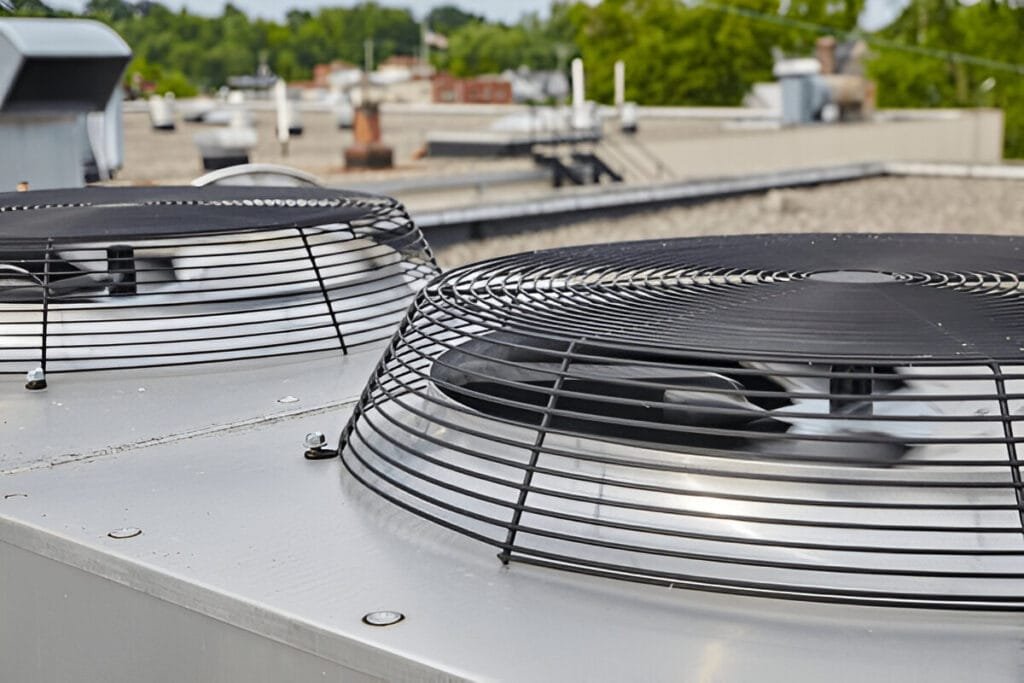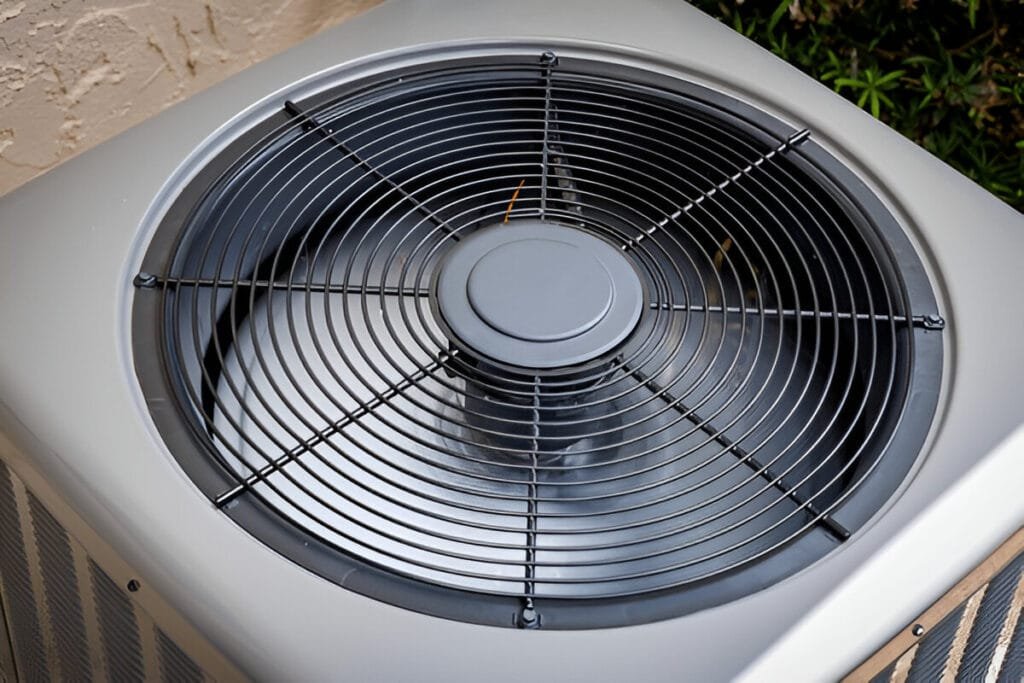What Is the Difference Between Blowers and Centrifugal Fans
Blowers and centrifugal fans differ in pressure, airflow, and application, with blowers designed for higher pressure systems.
Read More
The HVAC fan is a critical component of heating, ventilation, and air conditioning systems, responsible for circulating air throughout a building or space.
In this blog post, we will delve into the intricacies of HVAC fans, exploring the various fan types, such as blower fans, condenser fans, exhaust fans, and supply and return fans.
Additionally, we will examine how HVAC fans operate and discuss the different modes of operation, including auto mode, on mode, and fan only mode.

The HVAC fan is an essential component of air conditioning and heating systems, responsible for circulating air throughout a building. Also known as a blower fan or air handler, this electrically-powered device is typically located inside the indoor unit of an HVAC system, such as a furnace or air handler.
The primary function of the HVAC fan is to draw air from the interior space, pull it through the system’s filters and heat exchangers, and then distribute the conditioned air back into the living areas via a network of ducts. This process helps maintain a consistent and comfortable indoor temperature while also improving air quality by filtering out dust particles, allergens, and other airborne contaminants.
In most modern HVAC systems, the fan is driven by an electric motor, which can be either a single-speed, multi-speed, or variable-speed type motor.
When the thermostat calls for cooling or heating, the HVAC system’s control board sends a signal to the fan motor to start running. As the motor spins, it turns the fan blades.
In a central air conditioning system, the fan is located in the indoor unit, often referred to as the air handler or furnace. The fan draws warm air from the living spaces through the return air ducts and passes it over the cold cooling coils of the air conditioner’s evaporator. As the air moves across the coils, heat is absorbed, and the cooled air is then distributed back into the rooms through the supply air ducts.
During the heating season, the process is similar, but instead of passing over cold cooling coils, the air is heated by the furnace’s heat exchanger before being circulated back into the living areas. Some HVAC systems, such as heat pumps, use the same fan and air distribution system for both heating and cooling.


The main types of HVAC fans include blower fans, condenser fans, exhaust fans, and supply and return fans.
Blower fans, also known as air handler fans, are responsible for circulating conditioned air throughout the ductwork and into the living spaces. These fans are typically located in the indoor unit of an air conditioning system or furnace. Blower fans draw air from the return ducts, push it through the heating or cooling elements, and then distribute the conditioned air via the supply ducts.
Condenser fans are vital components of air conditioning systems, located in the outdoor unit. Their primary function is to facilitate heat transfer by drawing outside air across the condenser coil. As refrigerant flows through the condenser coil, it releases heat absorbed from inside the home. The condenser fan helps disperse this heat, allowing the refrigerant to cool down and continue the cooling cycle.
Exhaust fans play a critical role in removing stale, humid, or polluted air from specific areas of the home, such as bathrooms, kitchens, and laundry rooms. By expelling moist air and odors outdoors, exhaust fans help maintain indoor air quality and prevent issues like mold growth and structural damage caused by excess humidity.
Supply and return fans work together to distribute conditioned air throughout the home and return air to the HVAC system for reconditioning. Supply fans, often integrated with the blower fan, push conditioned air through the supply ductwork and into the living spaces. Return fans, on the other hand, draw air from the living spaces back into the return ducts, where it can be filtered, heated, or cooled before being redistributed.


Most modern air conditioners offer several fan modes, allowing users to adjust settings based on their specific needs and preferences.
Auto mode, also known as Automatic fan mode, is the default setting on most thermostats. In this mode, the fan operates only when the air conditioner is actively cooling or the furnace is heating. Once the desired temperature is reached, both the cooling/heating function and the fan will shut off simultaneously.
The primary benefit of Auto mode is energy efficiency. By running the fan only when necessary, the air conditioning system consumes less power, resulting in lower energy bills. This mode also reduces wear and tear on the fan motor, extending its lifespan.
However, Auto mode may result in inconsistent temperatures and humidity levels between cycles. When the fan is not running, air circulation decreases, potentially leading to hot or cold spots in certain areas of the home. Infrequent air filtration can also impact indoor air quality, which may be a concern for people with allergies or respiratory issues.
On mode, also referred to as continuous mode, keeps the HVAC fan running constantly, regardless of whether the air conditioner is actively cooling or the furnace is heating. This mode provides a steady flow of air throughout the home, helping to maintain consistent temperatures and humidity levels.
Continuous fan operation offers several benefits. It improves air circulation, reducing hot and cold spots and ensuring a more even temperature distribution. This is particularly useful in multi-story homes, where upper floors may experience uneven temperatures. Enhanced air filtration is another advantage, as the constant airflow allows the system to remove more dust particles, allergens, and other contaminants from the air.
However, On mode does consume more energy compared to Auto mode, as the fan is running continuously. This can lead to higher energy bills, particularly in regions with high electricity costs. Constant fan operation may also result in increased noise levels and more frequent air filter replacements.
Fan Only mode, as the name suggests, runs the HVAC fan independently of the cooling or heating functions. In this mode, the fan circulates air throughout the home without any active cooling or heating taking place.
This mode is useful for improving indoor air quality and providing a gentle breeze on milder days when cooling or heating is not necessary. Fan Only mode can help distribute fresh air from outdoor air intakes or energy-recovery ventilation systems, diluting indoor pollutants and reducing humidity levels.
However, Fan Only mode does not provide any active cooling or heating, so it should not be relied upon for temperature control. Running the fan continuously in this mode will also consume energy and may lead to increased operating costs over time.
The HVAC fan should be set to “auto” for optimal efficiency. In auto mode, the fan only runs when the system is actively heating or cooling. Leaving it on “on” mode continuously circulates air but may increase energy usage and wear on the fan motor.
While it is generally safe to leave the HVAC fan running continuously, it is not the most efficient option. Running the fan 24/7 can increase energy consumption, leading to higher utility bills. It may also cause more frequent filter changes and put additional strain on the fan motor.
The HVAC fan should run when the system is actively heating or cooling the home to distribute conditioned air. Running the fan for short periods between cycles can help even out temperatures and improve air quality. In some cases, continuous fan operation may be beneficial for those with allergies or respiratory issues.
The HVAC fan itself does not actively cool the house; it circulates air throughout the home. The cooling process is performed by the air conditioning unit, which removes heat from the air.